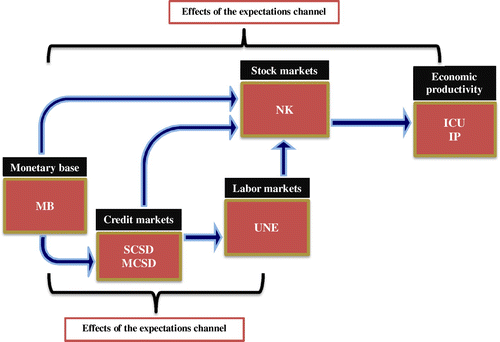Figures & data
Table 1. Descriptive statistics of the variables for testing the effectiveness of Japanese QE from 2001 to 2006: statistics for the period from March 2001 to March 2006
Table 2. Results of unit root tests: the cases of Japanese economic and financial market variables for the period of Japanese QE from March 2001 to March 2006
Table 3. Results of cointegration tests: the cases of Japanese economic and financial market variables during Japanese QE from March 2001 to March 2006
Table 4. Estimation results of the bivariate VECMs: the cases of Japanese QE from March 2001 to March 2006
Table 5. Estimation results of the two-regime Markov-switching dynamic regression models: the cases of the Japanese economy and financial markets from January 1985 to November 2015
Table 6. Results of the Granger causality tests: monetary base and other economic and financial market variables in Japan
Table 7. Inspecting the expectations channel of QE in Japan: results of additional Granger causality tests
Figure 1. Time-series evolution of the monetary base and the call rate during QE in Japan. Notes: This figure exhibits the time-series evolution of the monetary base and the call rate in Japan, including the period of Japanese quantitative easing (QE). The Japanese monetary base is shown in trillion yen. Quantitative easing monetary policy in Japan was executed by the Bank of Japan (BOJ) for the period from 19 March 2001 to 9 March 2006. This figure is drawn for the period from January 2000 to December 2007 and the shaded area in this figure indicates the period of the Japan’s QE. Furthermore, eight lines in this figure mean the date when the BOJ raised its targeting amount of current account balances.
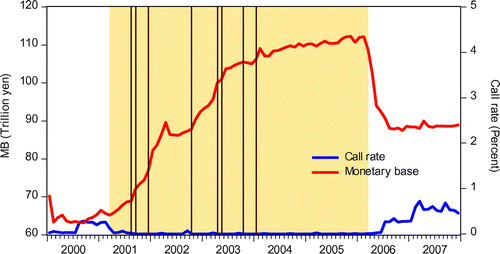
Figure 2. Time-series evolution of economic productivity, labor market, and financial market variables during QE in Japan. Notes: This figure exhibits the time-series evolution of various variables as to economic productivity, labor market conditions, and the state of financial markets in Japan. This figure is drawn by including the period of Japanese QE from 2001 to 2006. More specifically, Panel A shows the evolution of IP; Panel B displays the time-series of ICU; Panel C exhibits the evolution of UNE; Panel D exhibits the time-series of SCSD; Panel E shows the evolution of MCSD; and Panel F indicates the time-series of NK. In this figure, IP denotes the Japanese industrial production index; ICU means the capacity utilization ratio index in Japan; and UNE is the absolute unemployment rate in Japan. In addition, SCSD denotes the Japanese short-term credit spread and this variable is constructed by subtracting the two-year Japanese government bond yield from the short-term Nikkei bond index yield; MCSD means the Japanese medium-term credit spread and this variable is constructed by subtracting the five-year Japanese government bond yield from the medium-term Nikkei bond index yield; and NK denotes the Nikkei 225 stock price index in Japan. This figure is drawn for the period from January 2000 to December 2007 and the shaded area indicates the period of the Japan’s QE. Furthermore, eight lines in this figure mean the date when the BOJ raised its targeting amount of current account balances.
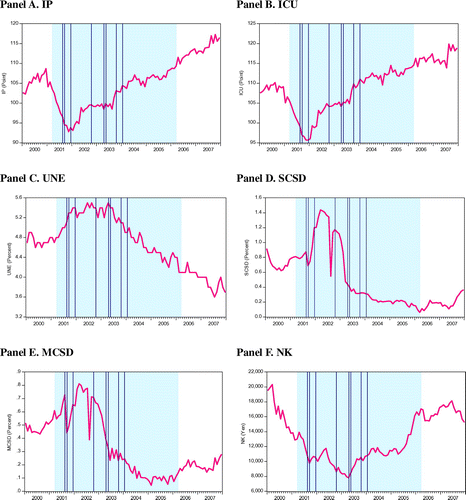
Figure 3. Impulse response functions from the VECMs: responses of economic and financial market variables to the increases in the monetary base in Japan. Notes: This figure presents the responses of various variables to the positive shock to the Japanese monetary base. The analyzing period using the VECMs is from March 2001 to March 2006, in which the BOJ conducted QE policy. Panel A of this figure shows the response of IP to MB; Panel B displays the response of ICU to MB; and Panel C exhibits the response of UNE to MB. Moreover, Panel D shows the response of SCSD to MB; Panel E exhibits that of MCSD to MB; and Panel F displays that of NK to MB. Regarding variables, MB denotes the amount of the monetary base in Japan; IP denotes the Japanese industrial production index; ICU means the capacity utilization ratio index in Japan; and UNE is the absolute unemployment rate in Japan. In addition, SCSD denotes the Japanese short-term credit spread; MCSD means the Japanese medium-term credit spread; and NK denotes the Nikkei 225 stock price index in Japan.
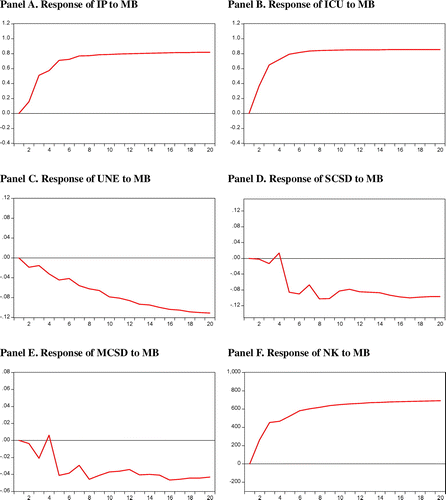
Figure 4. Probabilities in the higher or lower state derived from the two-regime MSDR models. Notes: This figure displays the probabilities for six variables to stay in the higher or lower state and the probabilities are derived from the two-regime Markov-switching dynamic regression (MSDR) models. Specifically, regarding IP, ICU, and NK, the probabilities for the variables to stay in the higher state are displayed. On the other hand, as for UNE, SCSD, and MCSD, the probabilities for the variables to stay in the lower state are exhibited. These probabilities are shown for the period from January 1985 to November 2015, which includes the period of Japanese QE from March 2001 to March 2006 (shaded area). Further, three red lines in this figure mean the Paribas shock (August 2007), the Lehman shock (September 2008), and the US government credit-rating downgrade shock (August 2011), respectively. Moreover, IP denotes the Japanese industrial production index; ICU means the capacity utilization ratio index in Japan; and UNE is the absolute unemployment rate in Japan. Further, SCSD denotes the Japanese short-term credit spread; MCSD means the Japanese medium-term credit spread; and NK denotes the Nikkei 225 stock price index in Japan.
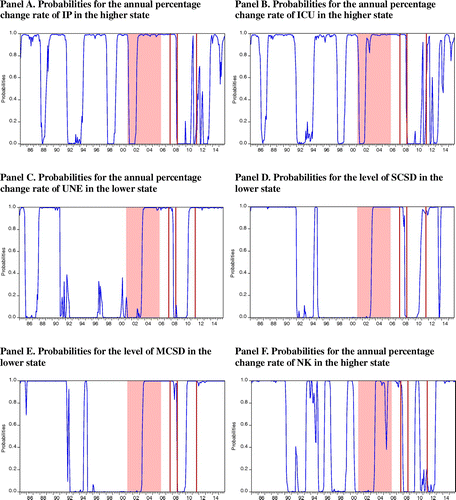
Figure 5. Impulse response functions from the Bayesian VAR models: responses of economic and financial market variables to the increases in the monetary base in Japan. Notes: This figure presents the responses of various variables to the positive shock to the Japanese monetary base. The analyzing period using the Bayesian VAR(4) models is from March 2001 to March 2006, in which the BOJ conducted QE policy. Panel A of this figure shows the response of IP to MB; Panel B displays the response of ICU to MB; and Panel C exhibits the response of UNE to MB. Moreover, Panel D shows the response of SCSD to MB; Panel E exhibits that of MCSD to MB; and Panel F displays that of NK to MB. Regarding the variables more specifically, MB denotes the amount of the monetary base in Japan; IP denotes the Japanese industrial production index; ICU means the capacity utilization ratio index in Japan; and UNE is the absolute unemployment rate in Japan. In addition, SCSD denotes the Japanese short-term credit spread; MCSD means the Japanese medium-term credit spread; and NK denotes the Nikkei 225 stock price index in Japan.
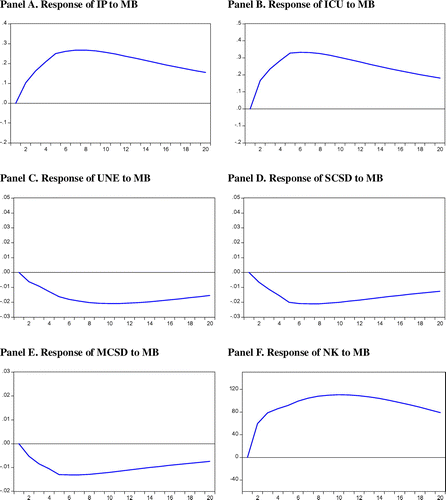
Figure 6. Time-series evolution of changes in expectations in terms of future business conditions: evidence from the short-term economic survey of enterprises in Japan. Notes: This figure exhibits the percentage change rates of expectations as to Japanese future business conditions, which are obtained from the BOJ’s short-term economic survey of enterprises in Japan. Panel A of this figure shows the year-on-year percentage change rates of the future expectations of manufacturing, nonmanufacturing, and all-industry firms in Japan. Panel B exhibits the percentage change rates from the previous quarter regarding the future expectations of manufacturing, nonmanufacturing, and all-industry firms in Japan. Japanese QE policy analyzed in this study was executed from 19 March 2001 to 9 March 2006 (shaded area) and this figure is drawn for the period from January 2000 to December 2007.
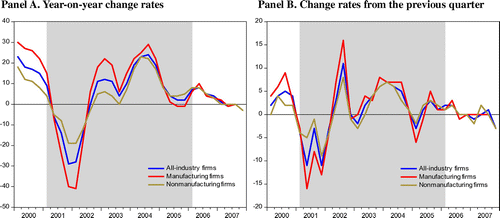
Figure 7. Portfolio rebalancing during Japan’s QE: accumulated fund flows in six economic sectors. Notes: This figure exhibits the time-series evolution of the accumulated fund flows of cash (and cash equivalents), government bonds, corporate bonds, lending, stocks, and investment in foreign securities for six economic sectors. Specifically, Panels A–F exhibit the fund flows for banks, insurance and pension funds, other financial intermediaries, nonfinancial corporations, households, and overseas, respectively. Japanese QE analyzed in this study was executed from 19 March 2001 to 9 March 2006 (shaded area) and this figure is drawn for the period from January 2000 to December 2007.
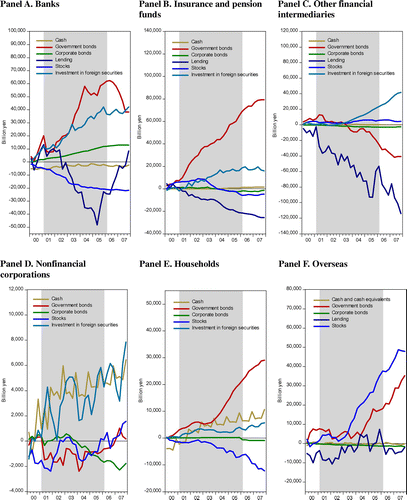
Figure 8. The mechanisms of the expectations channels of QE in Japan from 2001 to 2006. Notes: This figure depicts the mechanisms underpinning the effects of the expectations channels in Japan’s QE from 2001 to 2006. In this figure, MB denotes the amount of the monetary base in Japan; IP denotes the Japanese industrial production index; ICU means the capacity utilization ratio index in Japan; and UNE is the absolute unemployment rate in Japan. In addition, SCSD denotes the Japanese short-term credit spread; MCSD means the Japanese medium-term credit spread, and NK denotes the Nikkei 225 stock price index in Japan. Moreover, the arrows in this figure indicate unidirectional causal relations.
